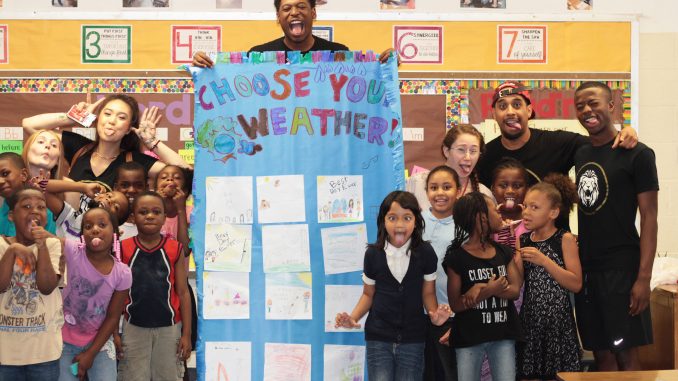
On Sept. 15, second-grade students at Alaine Locke Elementary School in West Philadelphia colored in puzzle pieces, forming a jigsaw-like artwork.
Their teacher, Patty Fox, said each piece listed a different way the children could transform their communities through “laugher and friendship and health and sports.”
The piece is now on display at the school.
“Seeing how the kids brighten up when we walk into the classroom is a really good feeling,” said Aaron Robinson, a junior accounting major who volunteers at the school.
This project was one part of the Social Emotional Awareness Community Art Program. Founded last February by Fox and senior media studies and production major Sam Colon, SEAC uses reading and art to address students’ mental health issues. Through their weekly lesson plans, Colon said SEAC aims to help the students process their emotions to improve their educational experience.
Robinson and several other Temple students volunteer every other Friday with SEAC.
“A lot of the kids in the neighborhood, and in low-income areas, suffer from different issues…like PTSD and all these other things that go on in their life,” Colon said. “And it translates into school.”
The lessons vary in theme, from topics like Black History and Women’s History months to “What Would Jackie Do,” a lesson on emulating the life of Jackie Robinson. Activities related to the topic are integrated into class throughout the week, concluding on Friday in a combined reading and art project with Temple student-volunteers.
Some of the children, Fox said, take multiple means of transportation to get to school each day. Others live in homeless shelters or low-income housing.
Fox said one of her students last year lived in a homeless shelter from December to the end of the school year. She added that Alaine Locke, in the Philadelphia School District, is in busing distance of six homeless shelters.
“These children have gone through so much more life than we have,” said Trinh Nguyen, a junior art education major. “I feel like the bar in society is already set so low for them, but they exceed that.”
Nguyen works as the “art translator” and develops ideas for art projects and presentations based on the reading.
Colon said many of the second-graders view Robinson as a mentor. Because the children often lack permanent relationships in their lives, a goal of SEAC is to provide children with stable role models in the form of Temple students, Colon said.
“A lot of these kids have so many people coming in and out of their lives,” Colon said. “We are not going to be the people to bring somebody else to leave again.”
Fox said her students progressed from rarely reading at the beginning of the year to enthusiastically reading together by the end. This year, only about two of her students could read at grade level at the start of classes.
“Some people, they just kind of see another inner-city kid,” Robinson said. “But when they actually are inside the classroom and you’re reading to them, and you are teaching them different art skills, and different art forms, they start to work together and learn and develop themselves together. I think being able to give them that platform to do that is remarkable.”
For Colon, the greatest part of the program is recognizing its long-term impact.
“You have individual moments that touch you…[like] to know that in three years something that we did today can translate,” Colon said. “Maybe someone graduates high school, or maybe someone reads on grade level. I think the larger scale is what really affects me.”


Be the first to comment